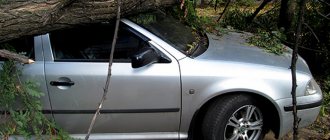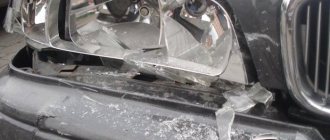Author: Ivan Alexandrovich
12.11.19
32
&image=https://www.uk-vertum.ru/wp-content/uploads/2019/11/court-ban-on-car.jpg" id="vk" target="_blank">
SHARE:
The court seized the car, the topic on which we have gathered here today, dear gentlemen. Greetings, dear readers of our blog. Today we have a fairly relevant topic. The topic affects every motorist in our country. We have quite a few of these; as of the beginning of 2021, there are more than 50 million cars in Russia. Owners of vehicles should be careful, a car is the same property and may be subject to seizure or a ban on registration. We will talk about the difference between these two concepts a little later. Now let's figure out which body can seize or ban registration actions. Such organizations include the judiciary. In particular, magistrates' courts, general jurisdiction, arbitration courts for the relevant constituent entity of the Russian Federation. In addition, it is allowed to impose restrictive measures by law enforcement agencies. As part of ensuring the requirements of the writ of execution, the bailiff has the right to issue orders to seize property. You can read more about the work of a bailiff in this article.
What to do when a car is seized?
First you need to find out the reason for such actions on the part of the bailiffs. You can find out why your car was seized by contacting the bailiff service. Usually, when a car is seized, its owner receives a copy of the decision to initiate enforcement proceedings against him. It states the reasons why the judicial authority made such a decision.
Any seizure placed on the vehicle can be lifted. If you can’t resolve the issue with the bailiffs, go to court. In any case, you will have to be patient and work hard.
The bailiffs seized the car?
We will consult on this issue for free!
+7
Can a car be confiscated for traffic fines?
Yes. For almost any unpaid fines, including those from auto-fixation cameras. But for this it is important to understand the terms after which the delay appeared, and how long it lasts.
These deadlines look like this:
- the driver or owner is given an administrative decision with a fine and given 70 days to pay (10 for entry into force, 60 directly for payment), if the person has not appealed the fine,
- after this period, the fine can be transferred to the bailiffs (and fines are not always transferred in practice),
- the bailiff, who is responsible for the information about the debt, initiates enforcement proceedings on paper and is obliged to give 5 days for voluntary payment,
- after this period, a decision may be made to collect funds from the debtor’s accounts - then the bailiff makes inquiries to banks (at random and not all) about the availability of the debtor’s accounts; if any are found, the money is debited from the card or accounts,
- further, if it was not possible to collect the debtor’s money directly, then an arrest may be imposed, only within the framework of which the car can be taken away to be sold against the debt.
Important! If the amount of your debt is less than 3,000 rubles, then arrest cannot be imposed (Part 1.1 of Article 80 of the Federal Law). We are talking specifically about each enforcement proceeding - that is, about each unit of debt, and not the total amount of all debts.
This also applies to civil debts.
The most common reasons for a car being seized
- The bank has exhausted all possibilities in trying to get the debtor to pay the consumer loan. The financial institution goes to court. In accordance with the court decision, the debtor's car will be seized.
- Debts to pay child support, proven in court. The car will be seized until the debtor pays the required amount.
- During a divorce, the car is subject to division as movable property, so it may be seized.
- If, during the import of the car into the territory of the Russian Federation, its owner did not complete or incorrectly completed the necessary documents.
- Unknowingly, the pawned car was purchased from fraudsters using forged documents.
Can they take the car for a loan if you don’t pay it?
Yes. This is a type of civil case. Moreover, we are not necessarily talking about a car loan - if any credit, loan or other obligations are not repaid, the debt can be collected at the expense of the debtor’s car. But only bailiffs. And there is a difference between a simple loan and a car loan when the car is pledged as collateral.
For a simple loan, the car is sold (sold at auction) by the bailiffs themselves, and the proceeds are used to pay off the debt. The difference then goes to the debtor's account.
In the case of a car loan, where the car is pledged to the bank, the scheme is slightly different, but even here the bank cannot simply take away the car. First, the bank is obliged to go to court to issue a ruling to recover funds from the debtor. As in all the schemes above, by court decision the writ of execution goes to the bailiffs.
But the difference here is that the seized car, which was taken by the bailiffs from the debtor, is not sold by the bailiffs themselves, but is transferred to the bank, and the bank sells it as collateral. At the same time, the buyer can transfer money to the account of the debtor directly, but only in the same bank, and the debtor will have secondary access to the account - the priority will be to write off the debt at the expense of the seized and sold car as collateral.
In what cases is it impossible to seize a car?
Bailiffs, without fully finding out all the circumstances related to the car, can arrest it. But performers do not always have the right to do this.
- A car cannot be seized if it is driven by a person with a disability.
- The car does not belong to the debtor, but is the property of one of his relatives or family members, for example, his wife or son.
- A car is a means of carrying out work activities. A person will lose the opportunity to work if he loses his vehicle.
Removing operating restrictions
To remove the imposed restrictions, the debtor first needs to contact the bailiff. When the seizure of the car is not a requirement of a third party, but occurred on the initiative of a specialist, it is necessary to demonstrate a willingness to cooperate. If it is not possible to completely repay the debt, you need to do it at least partially. Then there is a possibility that the bailiff will cooperate and lift the restrictions.
You can ask to return the car and be allowed to use it if the owner proves the need for travel. For example, a family lives far from a populated area, and a car is the only way to get to their destination. This does not guarantee a successful outcome of the case, but the bailiff can meet halfway and limit himself only to a ban on registration actions.
What to do if you want to lift the arrest?
- Method 1
Pay off the debt. If seized, the owner has about ten days to pay off the debt. If he cannot pay the debt or does not have time, then the car is sent for sale to the Russian Federal Property Fund. The car will be sold at an open auction, in which any citizen who submits an application can participate if they wish. The amount received from the sale is transferred to pay off the debt. If the debtor finds the money and pays off the debt, the car will be withdrawn from sale.
- Method 2
Contact the judicial authorities. You need to write a statement of claim addressed to the judge who issued a ruling recognizing the car owner as a debtor. In the application, demand the removal of the arrest or restriction on the use of the vehicle, indicate the reasons why the claim should be satisfied.
If the court decides in favor of the plaintiff, then it is better for the driver to always have the received document with him. Due to imperfect ways of exchanging information between services, bailiffs, and traffic police officers, paper may be needed to confirm the fact that the arrest has been lifted.
- Method 3
They don't buy your car, take it back. If you are lucky and no one buys your car at the auction, even the creditor bank will not need it. Then you can contact a bailiff. Write a statement demanding that your property be returned to you. If you are denied, send a complaint to the senior bailiff.
According to the law, if a vehicle is not sold within two months after revaluation, the claimant can, if desired, keep it. In case of refusal, the vehicle may be returned to the debtor. If the defendant does not have other property or income that can be seized to pay the debt, then the bailiffs return the writ of execution to the collector.
How to find out about a car arrest?
We have already found out that the restriction in the form of arrest will in any case be a consequence of enforcement proceedings. That is, such production must exist , which means you can find out about it.
Speaking about checking a car for restrictions, we have already looked in detail at ways to find out the restrictions. Despite the fact that the material focused on restrictions in registration actions, checking through the FSSP database will give results in the event of an arrest, because All information about the various official prohibitions will be provided.
Therefore, we will not return to this methodology in detail again, but we will briefly recall a few basic steps:
- Go to the FSSP website.
- Select "Advanced Search" and a data entry form will open.
- Please indicate your full name, date of birth and region. Click Find.
- Enter the captcha and click "Submit".
- Review the query results.
How to find out who seized a car?
This information may be extremely important because... It is the bailiff who needs to be contacted to resolve issues related to the restrictions imposed. You also need to know the FSSP department to file a complaint (petition) with higher management.
It is not difficult to find out the data - among the information obtained about the arrest using the above method, there will be the necessary parameters. Just keep in mind that when using the mobile version of the site, the table with information does not fit entirely on the screen. Scroll to the right for complete details.
All of the above methods for detecting arrest are relevant in cases where restrictions have not become known in the proper way. Under normal conditions, the resolution and act of seizure of the vehicle must be sent to the debtor no later than the day following the day of their signing (Part 7 of Article 80 of Federal Law No. 229).
How to correctly draw up an application to the court to lift the arrest
The application is written and sent to the judge who made the decision to impose a penalty on the debtor’s savings and property.
Important! Do not try to pity the representative of Themis by telling him about personal problems and sorrowful circumstances. The judge considers the essence of the issue. In the application, indicate the number of the article on the basis of which the decision will be made. In this case, this is Article 144 of the Civil Procedure Code of the Russian Federation. Clearly state all the facts confirming the need to remove the seizure from your property - the vehicle.
What points must be included in the application?
- At the beginning of the document the name and address of the court and the full name of the judge who imposed the arrest must be indicated. Below is the plaintiff's information - name, residential address, telephone number.
- Indicate the case number for which the arrest decision was made. It can be found in the office.
- The title of the application will be “Application for Cancellation of Security for Claim”
- When describing the circumstances of the case, we indicate for what reason the judge imposed the arrest, the date, the name of the judge, and we name the measures that were taken against you as a defendant. Then we provide information about the decision made, whether the claim was satisfied or rejected, the parties entered into a settlement agreement, or the case was left without consideration.
- Referring to Art. 144 we write for what reason the sanctions (arrest) should be lifted. We present all the circumstances in as much detail as possible.
- We conclude the statement with a request to cancel the measures to secure the claim, in this case arrest.
- We list the names of copies of documents attached to the application that are necessary to confirm your arguments.
Can bailiffs seize a car?
Yes, bailiffs have the right to seize a vehicle as part of enforcement proceedings if the court has made a decision to this effect. In this case, the debtor must be sent a notice of the opening of enforcement proceedings and a decree of seizure.
However, the law provides for cases when bailiffs and other authorities can seize a car without a court decision. This is possible, for example, in the case of a large debt on fines imposed for administrative offenses. And the FSPP, together with the traffic police, even organize raids to “catch” debtors on the road. And if it turns out that the stopped driver has a large amount of debt on fines, he seizes the car on the spot.
However, bailiffs cannot seize a car if:
- It is a means of transportation for a disabled person;
- It is necessary for the debtor to carry out professional activities.
Next we will talk about the fact that not only bailiffs have the right to carry out these actions.
Types of arrest
To give an accurate answer to the question of whether it is possible to drive a car that has been seized by bailiffs, it is necessary to consider the possible types of arrest:
- Restriction of the right to use. Implies a direct ban on the use of property by the previous owner. If the bailiffs establish such a restriction, driving a car will then be prohibited.
- Transfer of property under responsible storage or protection . An act is drawn up indicating who will be responsible for the safety of the property. This could be one of the debtor's family members, the debtor himself, any individual or organization with which the agreement was concluded.
- Seizure of property.
The last option of penalties is the most serious and is used as a last resort. The court confiscates the debtor's property in order to preserve its integrity.
Important! When a car is confiscated through court, it is sent to a specialized impound lot. It will remain there until the property is completely transferred to the use of the state and is sold at auction or until the debt is fully repaid by the debtor.
FAQ
The car has been seized: can I drive it?
To understand this, you need to carefully read the resolution sent to you. Everything will depend on what kind of arrest we are talking about:
- physical arrest - you cannot use the car, it is usually transported to the impound area;
- legal arrest - implies a ban on registration actions in relation to a car, that is, the owner will not be able to dispose of it (sell, give away), but will not be able to use it at all.
Most often, courts impose a seizure in the form of a ban on registration actions, that is, in most cases, you can drive a car. And if, nevertheless, it is not possible, then the car will be taken from the owner and put in an impound lot, that is, he will not have the physical opportunity to use it.
Can a car be impounded for fines?
Yes they can. A fine is one of the types of punishment for an administrative offense. Currently, the deadline for paying fines is 60 days. If you do not repay the collection debt during this period, the bailiffs will forcibly do it for you.
Of course, if you “forget” to pay one fine of several thousand rubles, no one will seize your car. Because the amount of the fine itself is insignificant compared to the cost of the car. However, if the violator has accumulated not 1 or 2 fines, but, for example, 11, and the total amount of debt exceeds 100 thousand rubles, then the bailiffs can seize the car and will act quite legally.
Can bailiffs seize a credit car?
A credit car is essentially collateral, and it is pledged to the bank. But the right of ownership already belongs to you. In this regard, a lot of controversy arises around the seizure of credit machines.
For example, in a situation where the bank that issued you a car loan went to court and demands repayment of the debt, the seizure by the bailiffs as part of this proceeding is legal and justified.
But when your credit car is seized for other debts, you may need the services of a good lawyer. The fact is that the bailiffs take the following position: if the car is pledged, then the pledge agreement must be registered with the State Traffic Safety Inspectorate (According to the Law of the Russian Federation “On Pledge” and Government Decree dated 08.12.94 N 938 “On state registration of motor vehicles and other types of self-propelled vehicles on the territory of the Russian Federation"). If the traffic police does not confirm this, then there are no legal barriers to arrest.
However, the Civil Code of the Russian Federation does not contain such a mandatory requirement. Therefore, this question remains open. And a good lawyer can turn the outcome of such a case in favor of the debtor.
The car is seized: how to sell
Since the arrest implies a ban on registration of the car, the owner will not be able to sell it until the debt is repaid and the arrest is lifted.
Even if we assume that the owner manages to sell the car (this sometimes happens due to failures in the databases of registration authorities, inattention of officials, etc.), the buyer will soon have claims, since he will not be able to dispose of the vehicle. This means that litigation cannot be avoided, in which the judge will definitely take the side of the bona fide buyer.
The only legal way to sell a seized car is to pay off debts, remove it from seizure, and then proceed to sell it.
How to find out if a car is seized?
It is recommended that every buyer check for encumbrances on the car (including seizure) before purchasing a car. However, the car owner himself may be interested in whether his vehicle has been seized or not.
This information is publicly available and can be verified online at the following sites:
- State Traffic Inspectorate – section “Checking for restrictions”;
- FSPP – section “Data Bank of Enforcement Proceedings”;
- Federal Chamber of Notaries – section “Checking the pledge of movable property”.
If it is not possible to use the services online, you can submit a request in person at one of the specified services.
We bought a car, but it was seized by the bailiffs: what to do?
- Get as much information as possible about the arrest. Head to the traffic police department to find out:
- when and by whom it was imposed;
- the reason for the arrest;
- the amount of debts (if arrest was imposed as a method of security).
- Contact the former owner. It may well be that he himself did not know about the seizure at the time of the sale. Then explain the situation to him - perhaps he will assist in solving the problem. If not, without threats, but with confidence, declare that you will sue, then he will have to pay much more (including state fees and damages) than the existing amount of debt.
- Try to lift the arrest yourself. If the seller has not taken any measures, of course, you can sue him. But there are also alternative options (especially since the seller cannot always be found):
- file a lawsuit to be recognized as a bona fide purchaser, then the debts of the former owner will have nothing to do with you and your property;
- send an application to the court to cancel the security for the claim, if the arrest is an interim measure in a property dispute, and you are one of its parties;
- file a claim to release property from seizure if you are not a party to the property dispute.
- Terminate the purchase and sale agreement in court. If the contract does not contain a clause on the presence of encumbrances, the court will definitely take the buyer’s side. If the outcome of the case is positive, the money paid for the car should be returned to you, and you should return the seized car to the former owner.
Advice! Indicate the actual cost of the car in the purchase and sale agreement. Often the parties agree to lower the cost in order to pay a smaller notary fee. However, please note that if the contract is terminated, according to the law, you will be returned the amount specified in the contract. Even if in fact you paid more. If the seller does not voluntarily want to return the amount actually paid, neither the court nor the bailiffs will force him to do so. Since there is no reason for this, the contract specifies a smaller amount.
Advice for car enthusiasts
What should car owners do in the event of an unpleasant situation with their vehicle being seized? Here are some useful tips.
- If you cannot pick up a car from a special parking lot for a long time for various reasons, you need to submit an application to the traffic police with a request to expedite the return of the vehicle. In this case, you must provide compelling reasons. For example, a car is needed to travel to work, to school, or for treatment.
- If the car is not released from the parking lot until you pay the fines, call the police. By law, 2 months are provided for payment.
During the procedure for arresting a vehicle, a protocol is drawn up in several copies. If the car owner puts his signature on it, then he admits guilt. If you disagree, you should not sign this document. The inspector will write about this in the protocol. When seized, the vehicle must be sealed. In controversial cases, contact lawyers who will help you.
There is a ban - is it possible to drive a car?
Yes. If the car is registered with the traffic police in your name, then as of 2021 there are no restrictions on driving such a car, even if there is a ban on registration actions.
As we have already indicated above, such a ban means the impossibility of performing the actions listed in the list. But the bailiff did not impose restrictions on driving. Therefore, it is possible to travel on public roads, and the inspector, if a preventive measure is detected on the road, will not be able to do anything legally.
Is it possible to drive
The main question that arises for people whose car has been seized is whether they can drive it. It is relevant for the reason that the property still belongs to the original owner, however, the court has already established restrictions and has all rights to it.
You can drive a car, however, this opportunity is retained by the owner until the vehicle is sent for sale to pay off the debt.










